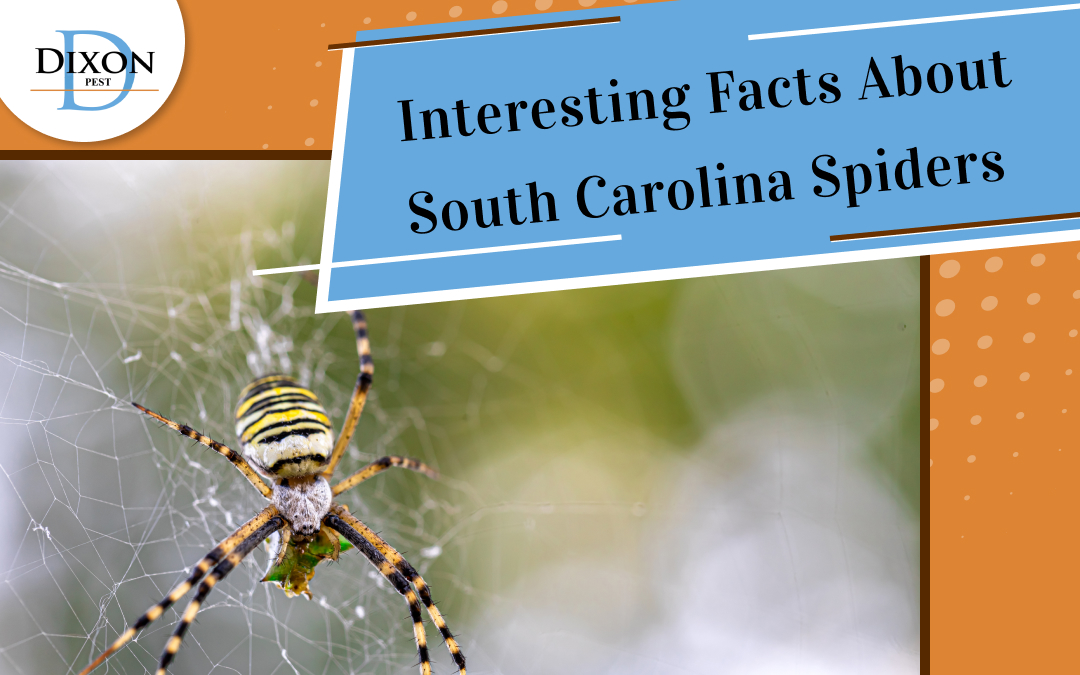South Carolina, which has varied landscapes and a relatively gentle climate, is known to have diverse wildlife species. Among these animals, spiders are probably the most misunderstood ones. They contribute greatly to this ecosystem, yet people get terrified in their presence. Whether you reside here or are visiting, these interesting facts about South Carolina spiders might make you appreciate eight-legged critters a bit more. However, in some cases, spider infestations can occur, especially in homes or buildings, but most spiders are harmless and beneficial to the environment.
Common Spider Species in South Carolina
1. More than 40 Spider Species
South Carolina is home to many spider species, with more than 40 types across the state. They range from tiny house spiders to larger, more intimidating Carolina wolf spiders. Many of these spiders prefer different habitats, such as forests, gardens, and even inside homes.
2. The Carolina Wolf Spider
South Carolina residents frequently encounter the Carolina wolf spider among their local spider population. The large hairy spider faces a mistaken identity as a tarantula yet poses no danger to human beings. Carolina wolf spiders hunt from the ground so they hide themselves under rocks and logs. Despite their intimidating dimensions these spiders normally pose no danger to humans while performing their role in insect population regulation.
3. Poisonous Spiders: Brown Recluse and Black Widow
The majority of spiders found in South Carolina do not pose any danger yet you should be cautious with the brown recluse and black widow species.
- Brown Recluse Spider: A brown recluse spider is identifiable through its back patterns with the distinctive violin mark and its habit of seeking dark concealed spaces such as attics and basements. The reported bite marks of this species cause necrotic lesions yet these bites seldom take place according to reports.
- Black Widow Spider: The black widow spider exists as one of the dangerous venomous arthropods found throughout South Carolina. The spider features a unique red hourglass design which can be seen on its abdominal section. Spiders in the black widow species avoid contact with people but they may deliver dangerous bites, especially to the elderly and children when they feel threatened.
4. Spiders are Beneficial Predators
Spiders play a very significant role in regulating the insect population of South Carolina. They are natural predators that consume almost all kinds of insects, such as flies, mosquitoes, and agricultural pests. These creatures function to keep such pests at an ideal level. The orbs are indeed larger species that spin large-sized webs, trapping hundreds of insects at one time.
5. Their Webs are Engineering Marvels
Spiders display their most captivating trait by producing webs through their spinning process. Spiders in South Carolina construct intricate circular web structures that serve as elaborate creations. Webs function as more than decorative objects because they serve to catch prey. Golden silk orb-weavers demonstrate impressive web-spinning abilities because they create traps that capture prey that surpass their body size.
6. Spiders Can Travel Long Distances
Some species of spiders in South Carolina are travel bums, or at least they like to get around. They can travel long distances. One of the methods that spiders have devised to get around is by ballooning, where they release silk threads, which catch on to the wind, and carry them to new locations. Thus, spiders can colonize new areas and spread all over the state.
7. They Help the Environment
Spiders do this more than anything else other than pest control, they supply food to animals such as birds, lizards, and many small mammals, and even for some of their species, aid in pollinating flowers while capturing prey on multiple plants. The spiders thus integrate into the ecological environment of this region.
8. Spiders Aren’t All That Intimidating
Despite their reputation, most spiders are not aggressive toward humans. They will usually try to avoid you if given the chance. Spiders generally only bite in self-defense, and most bites cause little more than mild irritation. If you encounter a spider in your home, it’s best to carefully relocate it outside rather than harm it.
9. Spiders Can Live in Your Home
While some of the spiders love staying outdoors, others live indoors, and in buildings all over South Carolina. They often find entry through open windows, doors, or cracks in the foundation. House spiders like the common house spider or cellar spider are harmless and usually appear in dark corners, attics, or basements. They are quite effective at catching indoor pests such as flies and moths. However, if you’re dealing with an overwhelming number of spiders, it’s important to consider spider control to prevent them from becoming a nuisance in your home.
10. Conservation of Spiders in South Carolina
South Carolina conservations contribute to the preservation of the several spider species living within the state. Generally, conservation efforts for spiders are neglected since they form an integral part of the regional biodiversity. Multiple organizations now dedicate themselves to protecting natural habitats because they support spiders and additional advantageous insects.
Conclusion
Spiders’ small size does not diminish their vital position in South Carolina’s ecological system. Spiders fulfill two primary functions in the ecosystem by managing pest numbers while serving as a food source for different animals. Consequently, they maintain essential ecological roles in nature.
Dixon Pest Solutions recognizes the importance of these natural pest controllers and works to ensure your home is pest-free while maintaining a healthy environment.

